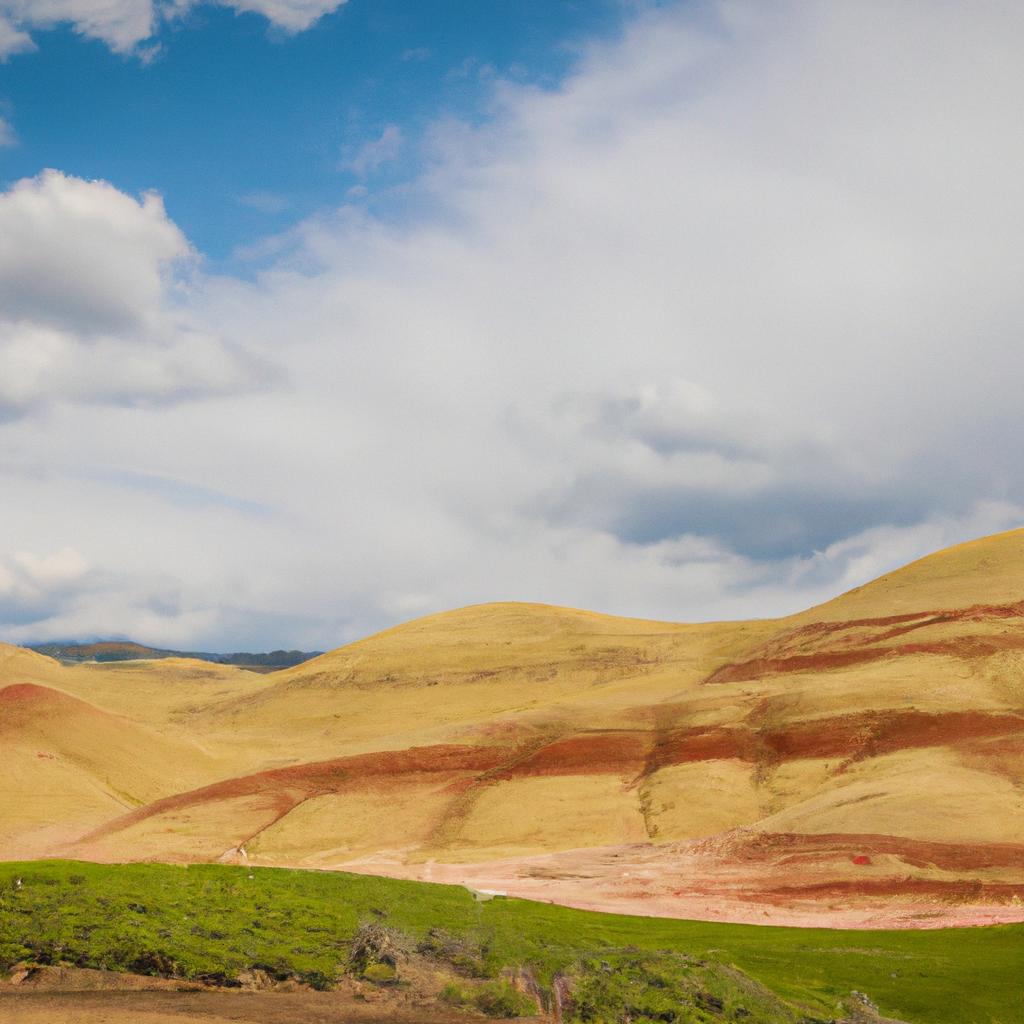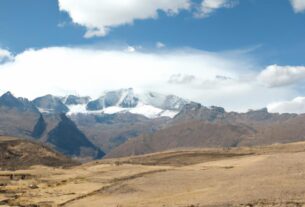Located in Wheeler County, Oregon, The Painted Hills are a geological wonder that should be on every nature enthusiast’s bucket list. These hills are renowned for their vibrant colors, which have been shaped over millions of years through erosion and the deposition of various rocks and minerals.
Unveiling the Geological Wonders
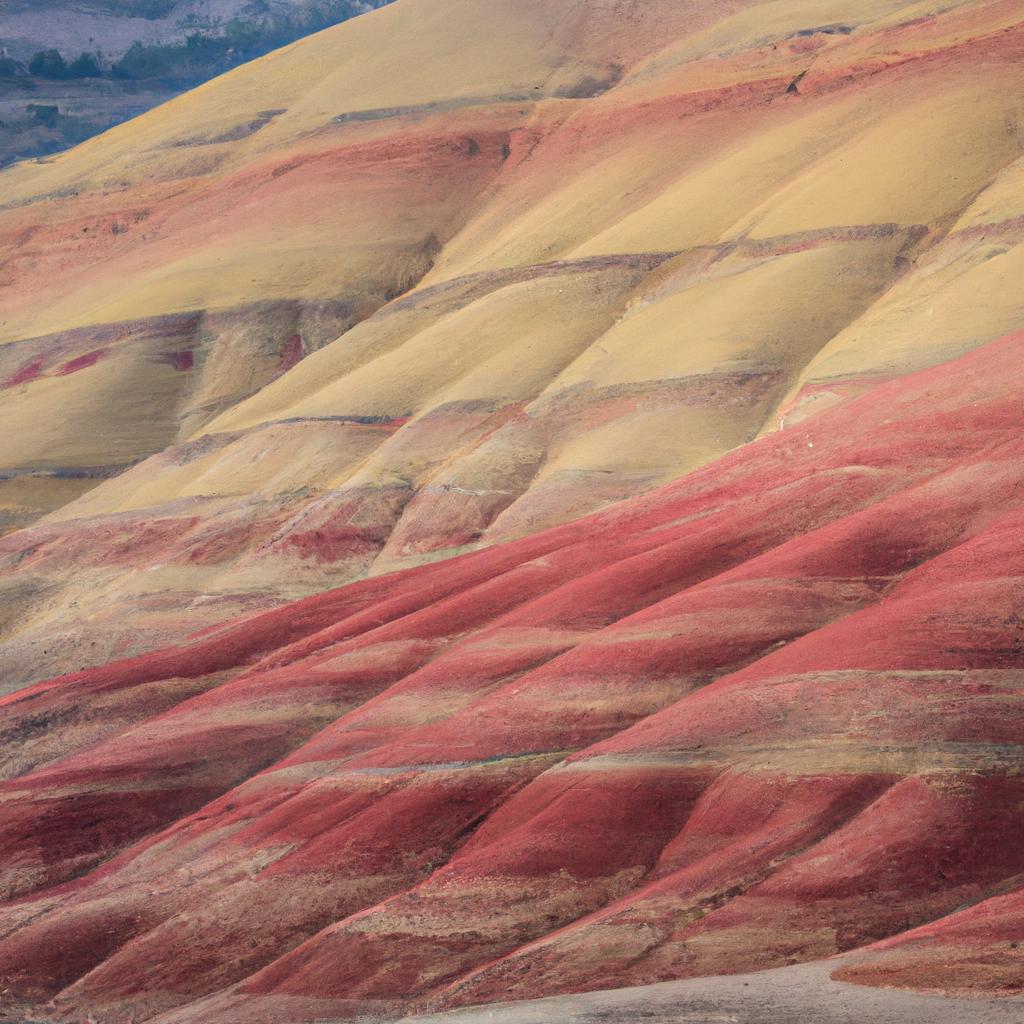
The Painted Hills owe their existence to the John Day Formation, a collection of rock formations dating back approximately 33 to 55 million years ago, during the Paleocene and Eocene Epochs. In the past, the area was a floodplain, and the consistent cycles of flooding and drying led to the deposition of sediments like volcanic ash, clay, and silt.
Over time, these sediments were compressed and heated, forming various types of rocks such as shale, mudstone, and siltstone. The breathtaking colors of The Painted Hills are a result of the diverse amounts of iron, magnesium, and aluminum found in these rocks. Iron oxide contributes the vibrant red, orange, and yellow hues, while magnesium and aluminum oxides give rise to blues and greens.
Distinct banding patterns also grace The Painted Hills, indicating changes in the depositional environment over the millennia. Darker bands represent periods of increased rainfall, while lighter bands signify periods of drought.
As a testament to natural processes, The Painted Hills provide visitors with a unique opportunity to witness the captivating beauty of geological history.
The Flora and Fauna Flourishing Amid the Hills
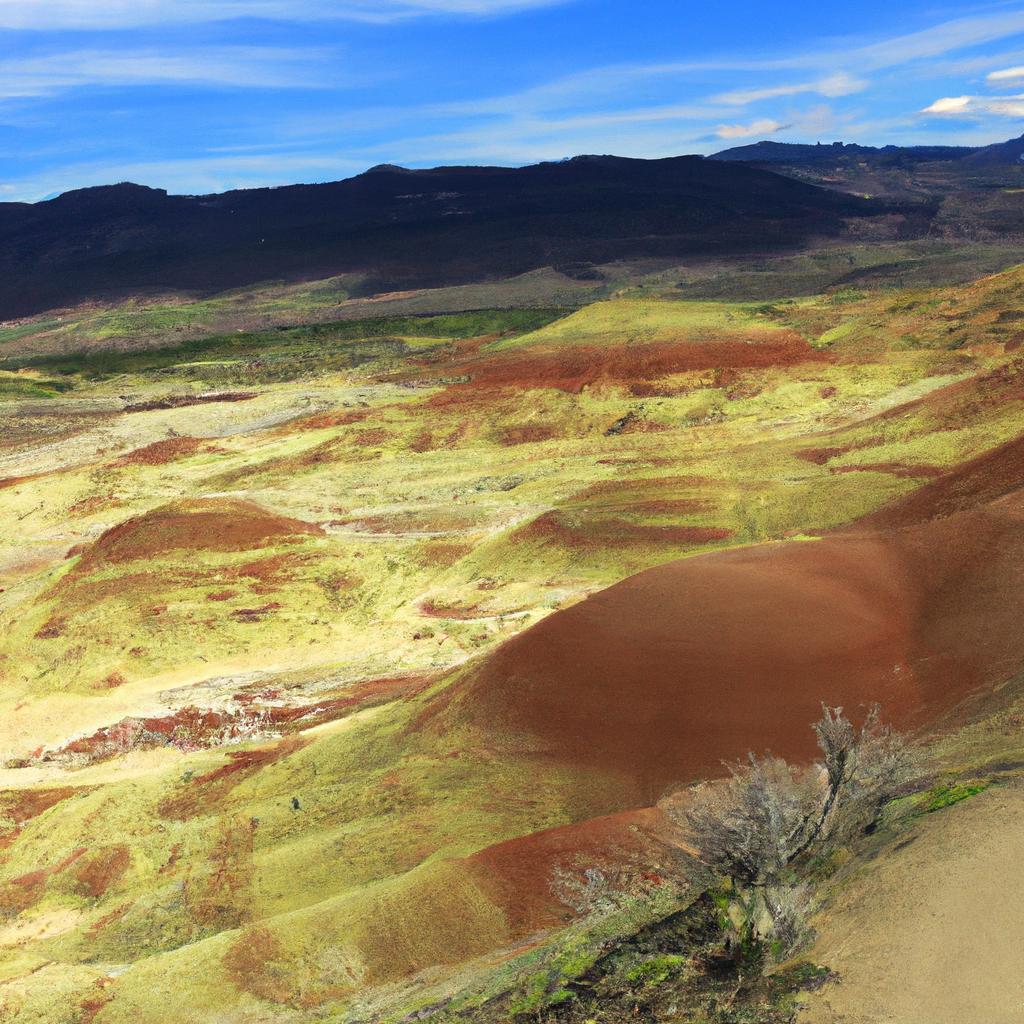
Despite the challenging conditions, The Painted Hills are home to a diverse array of plant and animal species. The hills boast a patchwork of grasses, shrubs, and wildflowers, serving as a vital source of food and shelter for numerous insects, birds, and small mammals.
The sagebrush, belonging to the sunflower family, stands as one of the most common plant species in The Painted Hills. Adapted to the arid and dry environment, sagebrush plays a crucial role by providing sustenance and refuge for many animal species. Other notable plant species include bitterbrush, rabbitbrush, and vibrant wildflowers like lupine and paintbrush.
Bird enthusiasts will find joy in observing species such as the sage thrasher, mountain bluebird, and western meadowlark. The area is also inhabited by small mammals like rodents, rabbits, and coyotes, as well as reptiles such as the western fence lizard and sagebrush lizard.
In summary, The Painted Hills are both a geological marvel and a haven for diverse flora and fauna, making them a truly unparalleled destination.
Discovering the Human and Natural Histories
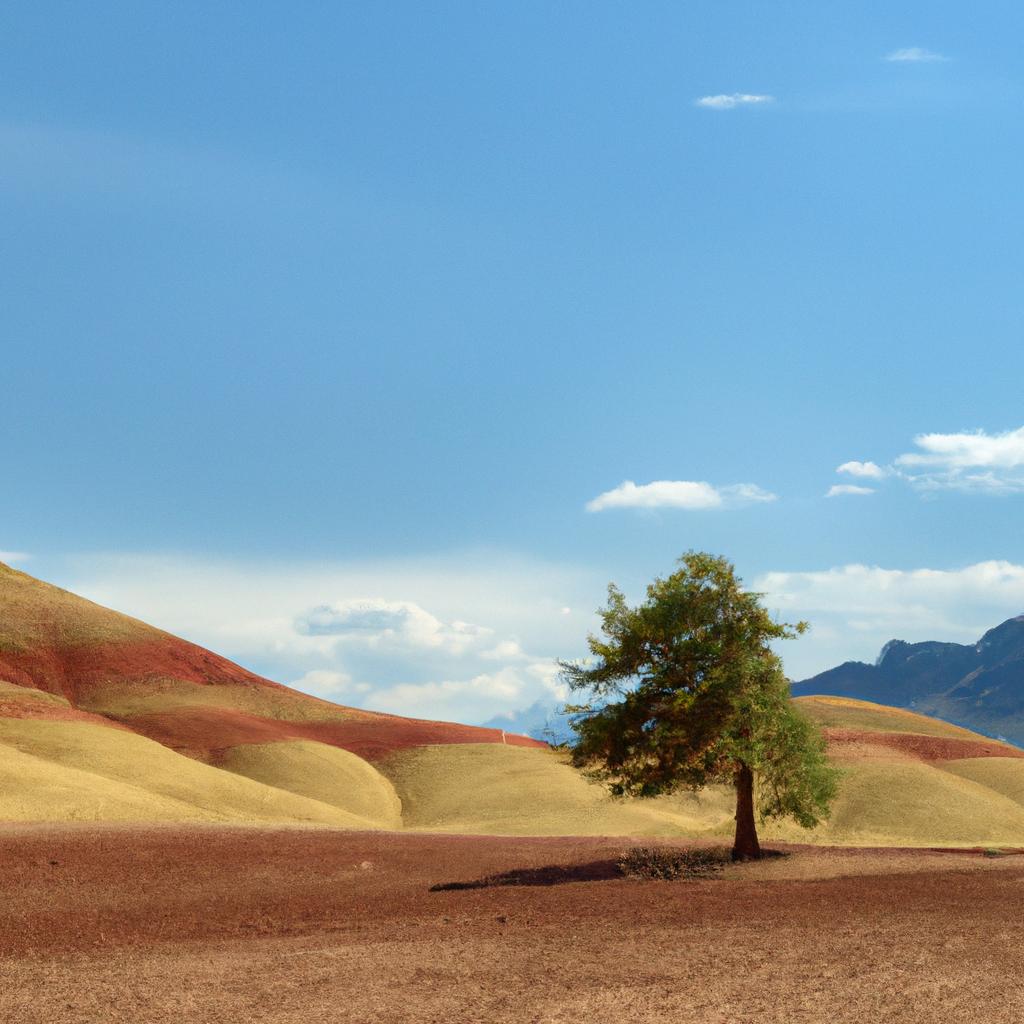
For thousands of years, Native American tribes have called The Painted Hills their home. The Sahaptin-speaking Wasco and Northern Paiute tribes, deeply connected to the land, hunted and gathered food while weaving myths and legends around The Painted Hills.
The arrival of European settlers in the 19th century left significant marks on the area. The introduction of livestock caused overgrazing, devastating the natural vegetation. Additionally, settlers mined the land for minerals and resources, resulting in a substantial impact on the local ecosystem.
Today, the National Park Service safeguards the splendor of The Painted Hills, working diligently to preserve the natural beauty and ecological integrity of the area. The human history of The Painted Hills serves as a crucial reminder of our capacity to affect the environment, emphasizing the importance of conserving our natural heritage.
Experience The Painted Hills
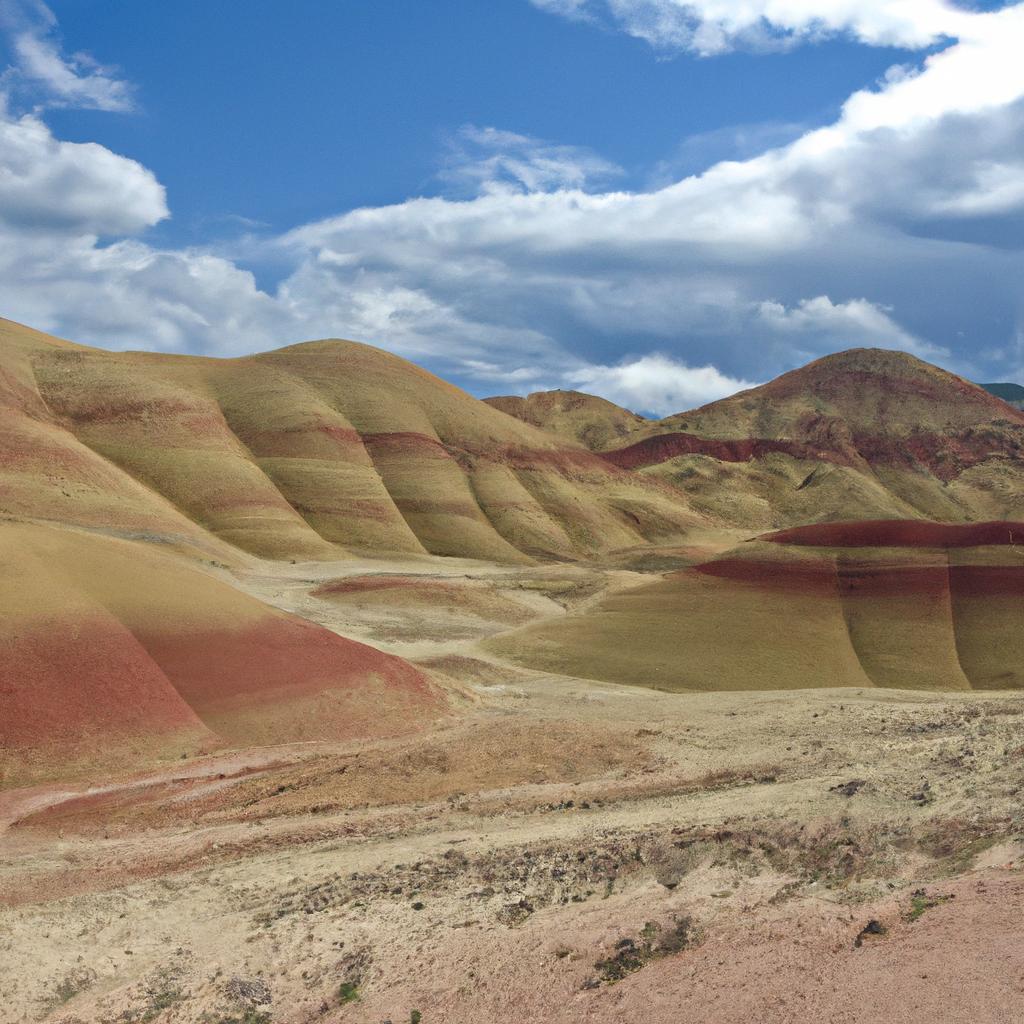
If you plan on visiting The Painted Hills, keep a few essential factors in mind to ensure an unforgettable experience. Firstly, respect the protected nature of the area by adhering to Leave No Trace principles, minimizing your impact on the environment.
Before embarking on your journey, check the weather forecast, as temperatures can vary significantly throughout the year. Spring and fall offer cooler temperatures and the most vibrant landscapes, making them the ideal times to witness the true beauty of The Painted Hills.
The area provides a range of hiking trails, catering to both beginners and seasoned adventurers. The Painted Cove Trail, a short and easy route, treats visitors to stunning views of the colorful hills. Meanwhile, the Carroll Rim Trail offers a longer and more challenging hike, rewarding hikers with a panoramic vista of the entire area.
Birdwatching, stargazing, and photography are among the other activities available at The Painted Hills. With its unique colors and textures, the hills attract photographers from far and wide, providing endless opportunities for capturing breathtaking images.
Concluding Thoughts
The Painted Hills represent a truly extraordinary destination, offering a glimpse into the geological history of our planet. Through millions of years of erosion and deposition, these hills have evolved into a masterpiece of nature. Moreover, the vibrant ecosystem of plant and animal life that thrives amid the harsh terrain adds an extra layer of wonder and fascination.
Whether you’re a nature enthusiast, an avid photographer, or simply seeking an immersive outdoor adventure, The Painted Hills are a must-visit destination. Remember to cherish and protect this remarkable treasure as you witness the profound beauty of nature. If you’d like to learn more about TooLacks, please visit here.
